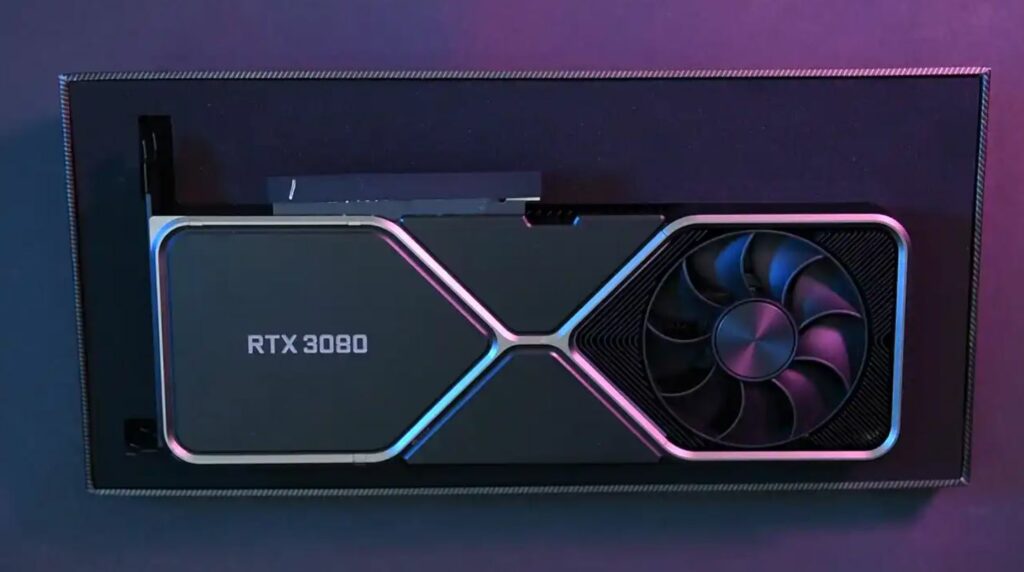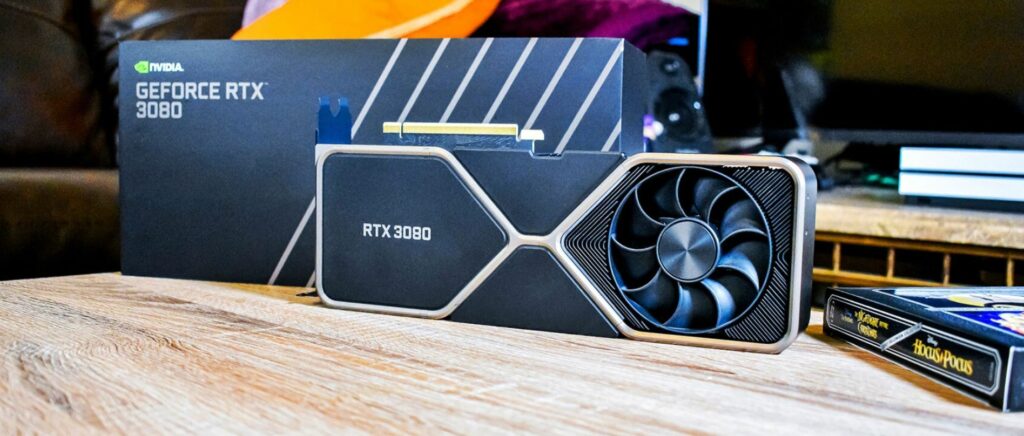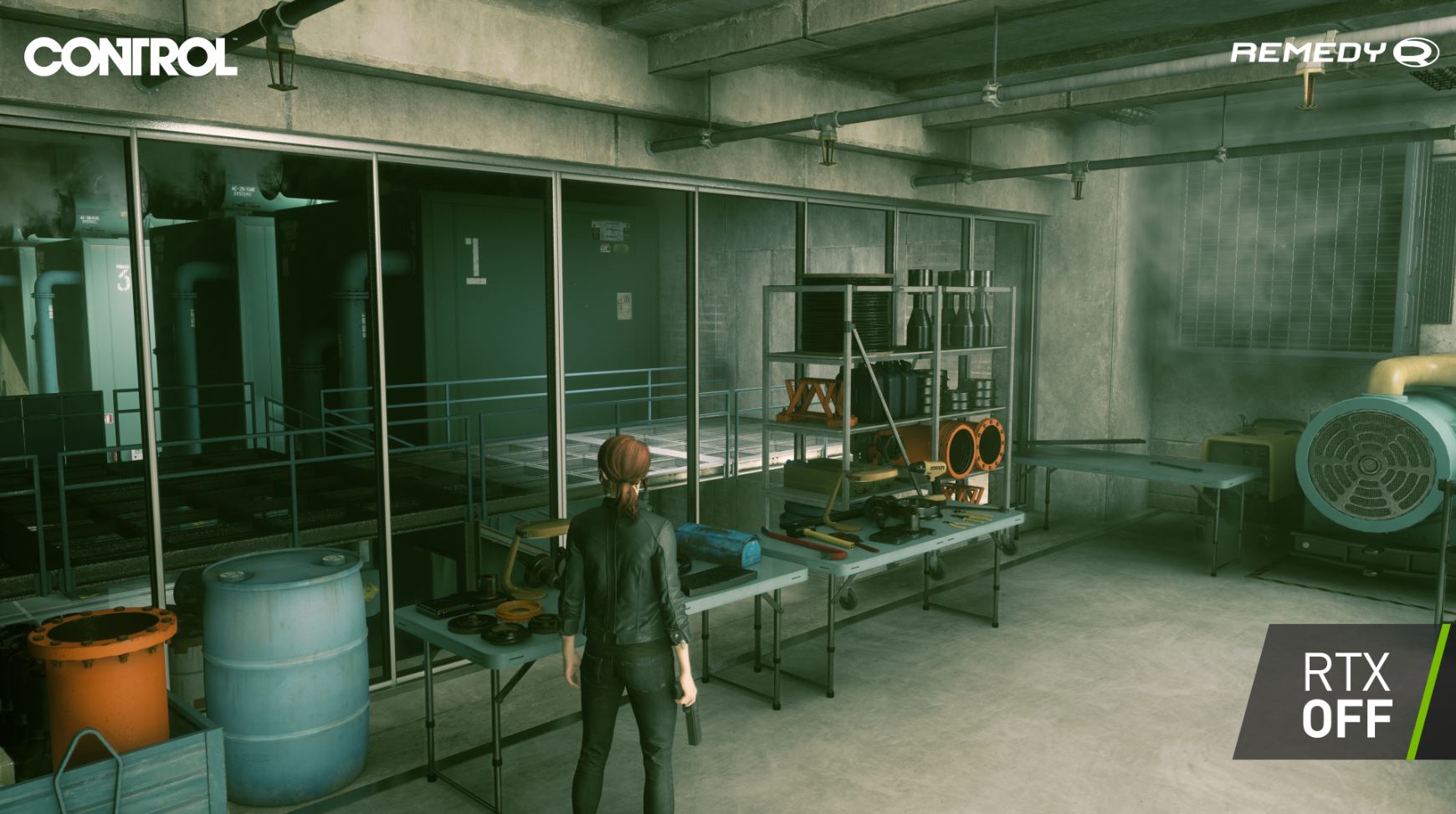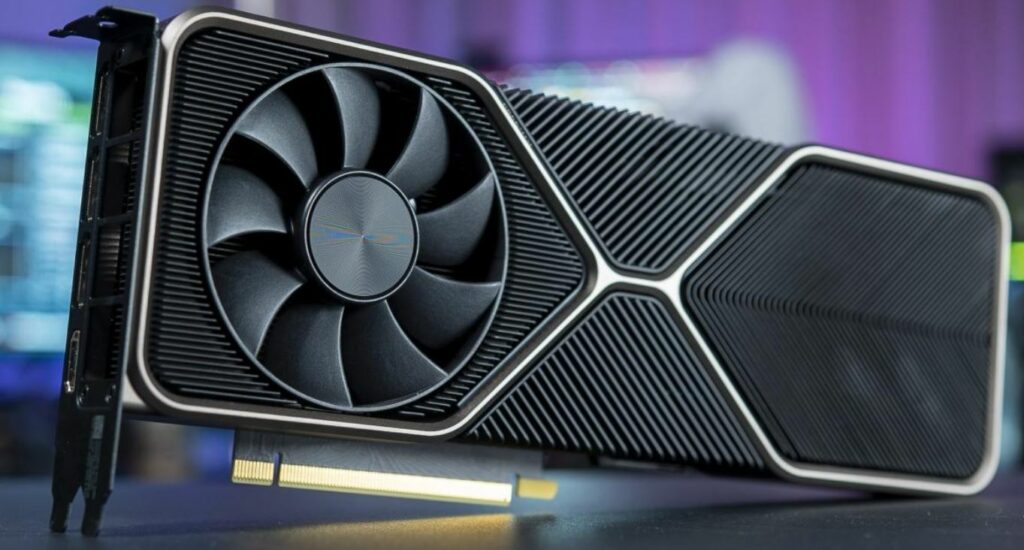Now 4K gaming is made easy with Nvidia GeForce RTX 3080! Get a full review, of its price in India here in this blog. We also have compared RTX 4070 vs 3090!

Overview
Expectations for the Nvidia GeForce RTX 3080 were extremely high when it was originally announced because it needed to dramatically improve Nvidia’s top-tier graphics card from the Turing era.
However, similar to the other Nvidia Ampere graphics cards, the RTX 3080 has not only met the task admirably but also completely redefines the performance of the elite cards by offering fast, 4K gaming at a price that is approachable, if not completely inexpensive.
Indeed, the RTX 3080’s performance gains over the GPUs it has replaced appear to represent the largest generational jump in processing capability in a very long time. Its performance is 20–30% higher than that of the card we reviewed for the Nvidia GeForce RTX 2080 Ti and, even more amazingly, 50–80% better than that of the card we reviewed for the Nvidia GeForce RTX 2080.
The fact that this GPU offers a performance boost at a far more affordable retail price adds to its cost. It costs around half as much as the GPU from the previous generation.
With the ability to run the top PC games at greater resolutions and quicker refresh rates for less money, the Nvidia GeForce RTX 3080 greatly increases the accessibility of high-end gaming for the average player.
We highly recommend the Nvidia GeForce RTX 3080 as the best graphics card to buy for those who can afford the entry-level price tag, even though there are more affordable cards with a better value proposition when it comes to the elite class of graphics cards. For those who have the extra cash to spend but still want the best performance, this card is simply the best value.
Also Read | Nvidia GeForce “RTX 4070 Super” Honest Review: Performance Life Insurance?
Nvidia RTX 3080 Price In India
The Nvidia RTX 3080 price in India is approximately between ₹90,000 to ₹1,50,000.
Buy Nvidia Geforce Nvidia RTX 3080 Here
Nvidia RTX 3080 Full Review

Although it’s not the most affordable graphics card available, there are cards that are only slightly better for twice as much money. Therefore, considering the degree of performance you get out of it in comparison to the rest of this generation, the MSRP pricing of the Nvidia Geforce RTX 3080 is actually fairly good, even though it is extremely costly when compared to its contemporaries and the card it is replacing.
Performance Review
Using the same system I used for the RTX 2080 review two years ago, I’ve begun testing the RTX 3080. The only game that I found to be challenging to test on this setup was Microsoft Flight Simulator, despite not having the newest and finest CPU.
I connected the RTX 3080 to a 27-inch Asus ROG Swift PG279Q monitor in order to run tests at 1440p. This monitor is perfect for an RTX 3080 at 1440p resolution because it supports refresh rates up to 165Hz + G-Sync. Additionally, I’ve been testing 4K performance, which is shown here.
I’ve spent the entire week playing a range of AAA games to get a sense of what the 3080 is like. Along with using built-in benchmarks, I’ve tested average frame rates in a number of games, such as Microsoft Flight Simulator, Call of Duty: Warzone, Metro Exodus, Death Stranding, Control, and Fortnite. Tested at maximum or high settings, the majority of the games consistently surpassed the average of 100 frames per second at 1440p.
With all settings maximized, Fortnite averaged 161 frames per second, whereas Warzone averaged 116 frames per second. Although you would normally drop the settings in competitive shooters to get these kinds of averages on other cards, the RTX 3080 was able to reliably provide a fluid high frame rate experience.
Even with more demanding games like Metro Exodus or Control, the RTX 3080 outperformed the previous RTX 2080 card in terms of performance at 1440p by around 60% or more. This resulted in a far more playable average of 57 frames per second for Metro Exodus on the RTX 3080, as opposed to an extreme 36 frames per second on the RTX 2080.
RTX 3080 review (1440p)
| Benchmark | RTX 2080 Founders Edition | RTX 3080 Founders Edition | % change |
|---|---|---|---|
| Microsoft Flight Simulator | 22fps | 29fps | up 32% |
| Shadow of the Tomb Raider | 65fps | 96fps | up 48% |
| Shadow of the Tomb Raider (DLSS) | 99fps | 117fps | up 18% |
| CoD: Warzone | 96fps | 116fps | up 21% |
| Gears 5 | 84fps | 95fps | up 13% |
| Fortnite | 108fps | 161fps | up 49% |
| CS:GO | 191fps | 263fps | up 38% |
| Destiny 2 | 98fps | 109fps | up 11% |
| Death Stranding | 113fps | 149fps | up 32% |
| Death Stranding (DLSS quality) | 143fps | 159fps | up 11% |
| Control | 79fps | 141fps | up 78% |
| Control (DLSS quality + RT) | 77fps | 121fps | up 57% |
| Control (RT) | 57fps | 91fps | up 60% |
| Control (DLSS) | 118fps | 144fps | up 18% |
| Metro Exodus | 36fps | 57fps | up 58% |
| Metro Exodus (RT) | 23fps | 38fps | up 65% |
| Metro Exodus (DLSS+RT) | 43fps | 66fps | up 53% |
I could easily take use of the higher refresh rates on the Asus ROG Swift PG279Q monitor when gaming on the RTX 3080 at 1440p; if I was ready to sacrifice a little bit of image quality, I could even get the full 165Hz refresh rate. For 1440p, the RTX 3080 seems like a really pleasant choice, even for the most taxing AAA games.
The RTX 3080 will not let you down if you’re upgrading from a GTX 1080 or something older and considering switching from a 1080p to a 1440p monitor. Of course, an RTX 3080 coupled with a 1080p resolution panel would yield even greater frame rates if you’re trying to get as competitive as you can in the world of esports. However, the RTX 3080 offers plenty of capacity for most users to upgrade to 1440p.
4K Testing
The RTX 2080 was designed to provide 4K gaming at a more reasonable $699 price point; but, even with all of the settings fully optimized, it proved unable to maintain 60 frames per second or higher in demanding games. I’ve therefore concentrated most of my RTX 3080 testing on 4K, using the card in conjunction with Acer’s 27-inch Nitro XV273K, a 4K panel that supports HDR and has refresh rates of up to 144Hz in addition to G-Sync.
I tried the Nvidia Geforce RTX 3080 at 4K and was able to reach or above 60 frames per second in almost all of the games.
The fact that I can play Call of Duty: Warzone with every setting at 4K and still average 85 frames per second impresses me. Sometimes it did occasionally drop below 60 frames per second, however, these were infrequent and usually occurred during parachute landings rather than battle scenarios.
There is a noticeable improvement in 4K performance between the RTX 2080 and RTX 3080. Shadow of the Tomb Raider went from an average of just 32 frames per second on the RTX 2080 to 57 frames per second on the RTX 3080 in most games where it was sixty percent or above.
RTX 3080 review (4K)
| Benchmark | RTX 2080 Founders Edition | RTX 3080 Founders Edition | % change |
|---|---|---|---|
| Microsoft Flight Simulator | 17fps | 29fps | up 70% |
| Shadow of the Tomb Raider | 32fps | 57fps | up 78% |
| Shadow of the Tomb Raider (DLSS) | 65fps | 94fps | up 44% |
| CoD: Warzone | 61fps | 85fps | up 39% |
| CoD: Warzone (RT) | 57fps | 80fps | up 40% |
| Gears 5 | 49fps | 80fps | up 63% |
| Fortnite | 53fps | 98fps | up 85% |
| CS:GO | 205fps | 261fps | up 27% |
| Destiny 2 | 63fps | 80fps | up 27% |
| Death Stranding | 66fps | 103fps | up 56% |
| Death Stranding (DLSS quality) | 88fps | 135fps | up 53% |
| Control | 40fps | 72fps | up 80% |
| Control (DLSS quality + RT) | 50fps | 72fps | up 44% |
| Control (RT) | 23fps | 45fps | up 95% |
| Control (DLSS) | 67fps | 114fps | up 70% |
| Metro Exodus | 15fps | 35fps | up 133% |
| Metro Exodus (RT) | 10fps | 17fps | up 70% |
| Metro Exodus (DLSS+RT) | 30fps | 49fps | up 63% |
| Metro Exodus (DLSS) | 60fps | 61fps | up 1.6% |
Ray Tracing & DLSS Testing
Although there is still room for a GPU a bit more potent than the Nvidia Geforce RTX 3080, Nvidia has some unique techniques to boost efficiency and even image quality. Ray tracing and DLSS, Nvidia’s AI super-sampling technique, were not available for me to evaluate when I did my first assessment of the RTX 2080 two years ago. At the time, Nvidia made the promise that these techniques will eventually boost frame rates and visual quality while also introducing more beautiful dramatic effects to games. These felt like empty promises for the future, though, as Nvidia’s claims were not supported by any titles at the RTX 2080 launch.
Now that that future has begun to emerge, more games are supporting DLSS in addition to ray tracing. With the use of AI supercomputers and neural networks, Nvidia’s DLSS technology analyzes games and sharpens or cleans up images at lower resolutions. In other words, DLSS enables a game to utilize Nvidia’s image reconstruction approach to upscale the rendered image to at least native 4K quality, even at lower rendering resolutions.


The effectiveness of DLSS and the performance advantages it offers amazes me. While each game offers both performance and quality options, allowing you to choose higher frame rates over higher visual quality, they all implement it significantly differently. I was able to retain the same frame rate with both features turned off and enhance visuals by turning on its ray-tracing mode in Control. It was quite difficult for me to see any decreases in image quality caused by DLSS in Control. Because DLSS is so superior, you would need to compare them side by side in order to truly examine the differences.
In Call of Duty: Warzone, I turned on ray tracing, but I didn’t notice a big performance drop. To be honest though, it was difficult to tell the difference. The performance hit was greater in Control when only ray tracing was enabled, with an average rendering speed of 45 frames per second and several drops below 30 frames per second. It rendered Metro Exodus unusable unless I also enabled DLSS.
Similar outcomes were observed in Fortnite, which has recently added DLSS and ray tracing. Many additional noticeable enhancements are provided by Fortnite’s ray tracing, such as shadows and reflections surrounding trees and lakes as well as an overall sense of polish. Ray tracing gives Fortnite a much more vibrant appearance.
Unfortunately, if you maximize every ray-traced effect in Fortnite, there will be a noticeable performance penalty. With the highest settings and maximal ray tracing, I was able to reduce my frame rate from 98 frames per second to just 20 frames per second. With ray tracing enabled, even DLSS was unable to significantly increase the average frame rate, which was only able to reach 39 frames per second.
For Fortnite, however, DLSS without ray tracing provides a significant performance boost in 4K. My average frame rate increased to almost 135 frames per second when I tested the performance DLSS option, from an already excellent 103 frames per second without DLSS.
Metro Exodus was also able to achieve significantly higher frame rates thanks to DLSS. DLSS improved performance from 35 frames per second to 61 frames per second, which resulted in much smoother gameplay. DLSS also increased frame rates in Control, averaging 114 frames per second instead of 100. That jump of 58 percent is quite remarkable.
Ray tracing still seems like it’s in its infancy, and in order to significantly improve the gaming experience, I believe game creators will need to incorporate it across the entire game rather than only using it in some areas. Additionally, the performance penalty is frequently too great to allow for ray tracing on its own; however, when paired with DLSS, it becomes more feasible. Because DLSS is so excellent, it may offset the significant performance loss caused by ray tracing and restore gameplay to games.
Nvidia Geforce RTX 3080 Design Review

- The new cooler design looks fantastic in a case and efficiently controls heat.
- The new adapter cable with a 12-pin power connector is too short.
- Disappointingly, USB-C output is absent.
Nvidia chose a whole unique cooler design for the Founders Edition graphics card, which is far more useful than anything the company has ever done with a reference design. In order to have merely a heatsink on the back of the card, the business developed a shorter, multi-layered PCB. By doing this, Nvidia was able to install a fan on the back of the graphics card, which will force cool air to rise out of the chassis through the heatsink.
Since this fan is blowing hot air right over the CPU and RAM, we were a little concerned when we first saw it that the temperatures of these components might be impacted. However, we didn’t see a performance difference in our own setup, which uses an AMD Ryzen 9 3900X with a Noctua NH-12UA air cooler. We suppose it helps that, at least currently, the majority of PC games don’t actually put as much strain on the CPU and GPU.
We have mixed thoughts regarding the new 12-pin power connector, but it is undoubtedly there in terms of power supply. It’s evident that the Founders Edition card’s new PCB design requires this smaller connector in order for the new cooler to function; we only wish Nvidia’s included 2 x 8-pin PCIe to 1 x 12-pin cable was a little bit longer. Though it’s a bit difficult to tie it out of the way so that it’s not instantly noticeable as it is, at least aftermarket cards won’t use it straight away. It is noteworthy, however, that Nvidia is granting access to any manufacturer—including AMD—wishing to utilize the 12-pin power connector design.
It’s wonderful that the Founders Edition offers one HDMI 2.1 and three DisplayPort outputs for displays. But we find it disappointing that Nvidia removed the USB-C output in this instance. The most advanced USB-C monitors are now the talk of professional content creators, so artists will undoubtedly still want to use this tremendously powerful card.
The Founders Edition is a beautiful piece of hardware in person, despite our minor complaints about it and our initial opinion that it was unattractive. The RTX 3080 has an all-black design with silver accents that gives it the appearance of high-end hardware.
The ‘GeForce RTX’ emblem on the side of the graphics card is the only illumination, which will delight any those who are against RGB colors. Additionally, third-party cards will give players the option to go all out with rainbow lights if they so choose.
Verdict
RTX 2080 failed to deliver Nvidia’s 4K 60FPS promise. Two years ago, the only realistic 4K GPU was the $1,199 RTX 2080 Ti, a big investment. The $699 RTX 3080 makes 4K PC gaming more affordable. Even with the RTX 3070’s lower settings, 4K PC gaming may become cheaper. The $499 RTX 3070 from Nvidia promises significant performance gains.
The Nvidia Geforce RTX 3080 brings in the next era of 4K gaming with its remarkable raw power and many of Nvidia’s RTX 2080 promises are fulfilled. Two years ago, DLSS and ray tracing were still futuristic concepts for PC games. The RTX 3080 makes it possible with Call of Duty, Control, Fortnite, and Minecraft supporting Nvidia’s recent innovations.
If you’re upgrading from a GTX 1080, the RTX 3080 will run great at 1440p or 4K. It would persuade many to upgrade, especially those who avoided the RTX 2000 series.
If you want to transition from 4K to 1440p, the RTX 3080 will give you enough headroom to skip a PC update for years. For 4K, upgrade to a GPU that maintains frame rates at high settings without breaking the bank. Since 4K PC gaming is available, it’s cheaper.


Leave a Reply